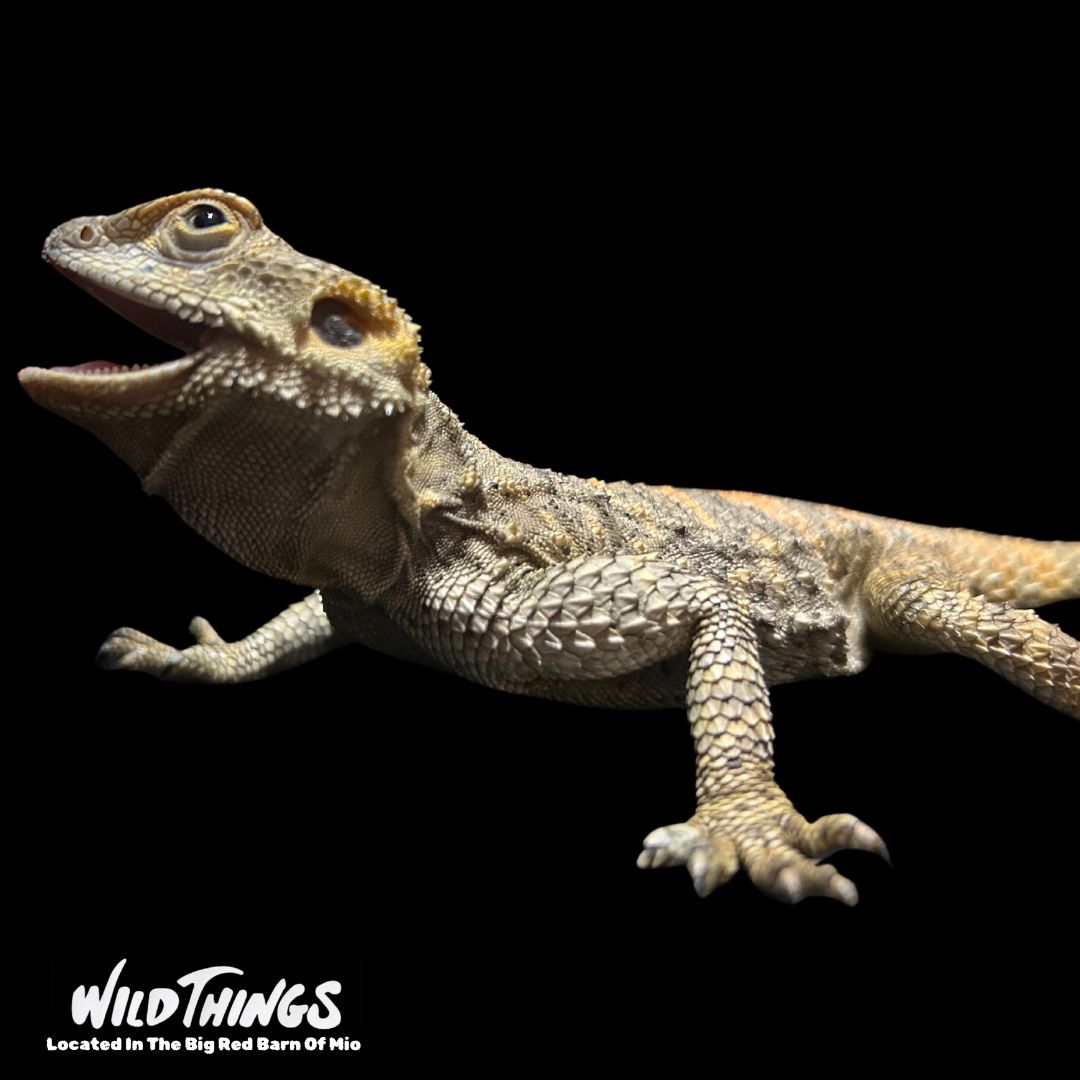AuSable River Outdoors
Painted Agama
Painted Agama
Couldn't load pickup availability
Species: Painted Agama
Scientific Name: Stellagama stellio
Origin: Eastern and northeastern Mediterranean
Lifespan: Up to 10 years
Size: 12”-14"
Enclosure Type: Painted agamas are quite active, so if you can provide larger enclosures, your pet will absolutely use the extra space.
Enclosure Size: The absolute minimum enclosure size for a single painted agama is 36” L x 18” W x 18” H, or a 40-gallon breeder-style tank.
Substrate: Substrate should be at least 2” deep and completely replaced every 3-4 months. Remove poop and urates daily, along with contaminated substrate. Reptisand, desert sand, and a 60/40 play sand topsoil mix are all suitable substrates for a painted agama.
Décor: Since painted agamas are a terrestrial species that prefers rocky terrain, at bare minimum you will need a flat basking stone and a couple of places for them to hide. However, you will also need to include other items, such as secured stacks of aquarium slate, ledges, hollowed logs, branches, and drought tolerant live or artificial plants.
Water: Although most agamas are from a dry area, they should be offered a shallow water dish with an airstone in, so the water bubbles slightly. This helps the agamas notice the water better. They should also be misted slightly daily allowing them to drink the mist.
Temperature: Painted agamas need a basking surface temperature between 105-115°F, and 70-85°F on the cool side. Temperatures should be measured via infrared thermometer. For best results, use a flat piece of stone such as flagstone, paver stone, or unpolished stone tile as the basking surface. Provide heat for your lizard with a halogen flood heat bulb placed above the basking branch. Halogen bulbs are the best way to imitate the warmth of sunlight indoors and considered to be a superior form of reptile heating by experts. Do not use ceramic heat emitters (CHEs), red bulbs, or blue bulbs, as these are not as effective. Mount the bulb in a ceramic-socket dome fixture to minimize the risk of fire. The heat lamp and all other light sources should be turned off at night to allow the enclosure to cool down. Temperatures can safely drop as low as 62°F without need for a lightless nighttime heat source.
Humidity: Painted agamas may be a semi-arid species, but that doesn’t mean you should simply ignore humidity as part of their husbandry. Provide 15-35% humidity during the day, and let things spike to 90-100% at night. Keep track of humidity levels with a digital probe hygrometer placed in the middle of the terrarium. To increase nighttime humidity levels, heavily mist the enclosure each evening with a pressure sprayer. It’s also a good idea to quickly mist the enclosure first thing each morning to create a morning-dew effect and encourage your agama to drink.
Lighting: Painted agamas require UVB lighting for their survival. UVB lighting helps provide a clear day/night cycle, provides all the vitamin D that your pet needs, strengthens the immune system, facilitates better digestion, and other benefits. Lights should be on for 10 hours/day during winter and 14 hours/day during summer to simulate seasonal changes in day length. All lamps should be turned off at night.
Type Of Diet: Omnivorous
Types Of Food: Dubias, discoids, red runner roaches, crickets, black soldier fly larvae, hornworms, silkworms, mealworms, alfalfa, arugula/rocket, bok choy, brussels sprouts, cactus pads, carrot greens, cress, collard greens, dandelion greens, endive, kale, mustard greens, radicchio, red leaf lettuce, romaine lettuce, spinach, turnip greens.
Feeding Schedule: Juveniles should be fed salad and insects daily. Adults salad daily, insects every other day
Supplements: You will also need calcium and vitamin supplements to prevent your lizard from developing a deficiency. Repashy Calcium Plus LoD, lightly dusted on all insects. It’s okay to occasionally skip a dusting. Supplement powder should not be put on salads.
Share

